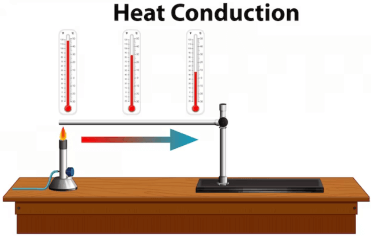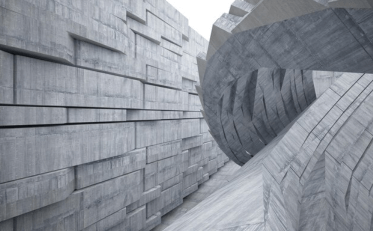Question
a.
0.5
b.
2
c.
2.5
d.
Data inadequate
Posted under Mass Transfer
Interact with the Community - Share Your Thoughts
Uncertain About the Answer? Seek Clarification Here.
Understand the Explanation? Include it Here.
Q. Find the slope of the operating line for the first stage if the dilutant in the feed is 5 kg and the solvent used for the second stage is 10 kg.
Similar Questions
Explore Relevant Multiple Choice Questions (MCQs)
Q. Plait point never occurs in the multistage operations.
View solution
Q. A mixture undergoing multicomponent diffusion is analyzed through the Maxwell-Stefan approach. With regard to this approach which among the following statements are incorrect? The difference in the partial pressure of the Component A over a small distance ∆z (AB) is proportional to
View solution
Q. If all the components except 1 of the multicomponent diffusing mixture are inert, then what will be the expression for Diffusivity of component 1 in the mixture?
View solution
Q. A mixture of 60% hydrogen and 40% oxygen is blowing over a pan of water at 1atm pressure. The bulk gas temperature is 30°C and the water temperature is 20°C. The vapor pressure of water at this temperature is 17.53mm Hg. The concentration of moisture in the bulk gas is negligible and the diffusivity values are DO₂-H₂O=0.357cm²/s, DH₂-H₂O=0.972cm²/s at 34°C and DH₂-O₂=0.891cm²/s at 43°C.
Which of the following statements are correct?
View solution
Q. A mixture of 60% hydrogen and 40% oxygen is blowing over a pan of water at 1atm pressure. The bulk gas temperature is 30°C and the water temperature is 20°C. The vapor pressure of water at this temperature is 17.53mm Hg. The concentration of moisture in the bulk gas is negligible and the diffusivity values are DO₂-H₂O=0.357cm²/s, DH₂-H₂O=0.972cm²/s at 34°C and DH₂-O₂=0.891cm²/s at 43°C.
What will be the values of the diffusivities (in cm²/s) at the mean gas-film temperature?
View solution
Q. A mixture of 60% hydrogen and 40% oxygen is blowing over a pan of water at 1atm pressure. The bulk gas temperature is 30°C and the water temperature is 20°C. The vapor pressure of water at this temperature is 17.53mm Hg. The concentration of moisture in the bulk gas is negligible and the diffusivity values are DO₂-H₂O=0.357cm²/s, DH₂-H₂O=0.972cm²/s at 34°C and DH₂-O₂=0.891cm²/s at 43°C.
What is the value of the flux (kmol/m³.s) of water vapor through a stagnant film of estimated thickness 1.5mm on the water surface?
View solution
Q. For a steady state equimolar counter diffusion of A and B. The N flux of A is ________
View solution
Q. The value of a ratio of N flux of A to the total N flux for a steady state equimolar counter diffusion is
View solution
Q. In sulphuric acid plants dry air is used for burning of sulphur. Air is dried in contact with concentrated Sulphuric acid. Moisture diffuses through a layer of air, reaches the surface and gets absorbed in it. Here air is said to be non-diffusing were as moisture is diffusing. Which of the following statements are correct?
View solution
Q. Consider steady-state equimolar counterdiffusion through the converging-diverging tube. Given: r₁=1cm; r₂=2cm; Nᴀ=10⁻⁶ kmol/m².s at the vessel 1 end of the tube. The rate of transport of B at the vessel 2 end of the tube is
View solution
Q. Two large vessels containing gaseous mixture of A and B at different concentrations but at the same total pressure are connected by a tapered tube of length 15cm and end diameters 1cm and 4 cm. what should be the diameter of a cylindrical tube of the same length that allows the same rate of transport of A?
View solution
Q. Two large vessels containing gaseous mixture of A and B at different concentrations but at the same total pressure are connected by a tapered tube of length 15cm and end diameters 1cm and 4 cm. At which point of the following locations in the tapered tube, the magnitude of the flux maximum?
View solution
Q. Equimolar counterdiffusion of A and B occurs through a spherical film of i.d=rᵢ and thickness δ. The flux of A is Nᴀ₁ at r=rᵢ. The flux through a flat film of the same thickness is Nᴀ₂. if Nᴀ₁ is larger than Nᴀ₂ by 5%, the film thickness δ is
View solution
Q. A napthelene hemisphere is placed on a glass plate and a napthelene ball of identical diameter is kept suspended in the stagnant air in two large rooms. The respective shapes of the ball are maintained while they sublime and reduce in size. Which of the following statements are true in this connection?
View solution
Q. Sublimation of a long cylinder made of napthelene occurs in a large volume of stagnant air. The time required for its complete sublimation is
View solution
Q. In a binary gas mixture containing A and B, If Nᴀ=-2Nв, what will be the expression for Nᴀ?
View solution
Q. Oxygen diffuses through a stagnant layer of air, 1mm thick, ambient temperature 28°C and 1atm total pressure. The partial pressure of oxygen on two sides of layer is P₁=0.9atm and P₂=0.1atm respectively. Calculate the value of Molar flux (in mol/m².s) with respect to an observer moving with molar average velocity. Calculate this value at the end of the path where P₂=0.1atm. Use R=8.205*10⁻⁵m³atmK⁻¹mol⁻¹.
View solution
Q. In order to prepare Lithium nitride, air is passed gently over a reactor. Suppose that Nitrogen diffuse to a length 5cm before getting reacted with Lithium. Nitrogen reacts with lithium quickly so that partial pressure of Nitrogen at that point is 0. Reactor is a cylinder of length 10cm and diameter 2cm. Assume air to be a mixture of Nitrogen and Oxygen only. The temperature is 298K and total pressure 1atm. Diffusivity of N₂ in O₂ is 2*10⁻⁵m²/s. Calculate the Molar flux (mol/m².s) of N₂ at a distance of 2.5cm from the top with respect to an observer moving with twice the mass average velocity a direction towards the liquid surface. (R=8.205*10⁻⁵m³atmK⁻¹mol⁻¹). Assume z=0 at the top of the reactor.
View solution
Q. A binary liquid mixture is separated by distillation process. The more volatile A vaporizes while less volatile B gets transported in opposite direction. Latent heat of vaporization of A and B is 0.5 unit and 1 unit respectively. What will be the relation between molar flux of A and B?
View solution
Q. In an accident a container containing ethanol(s.g 0.789) falls down in a room of dimension 1*1*2(all in m). Ethanol forms a layer of 2mm. Ethanol vaporizes and diffuses through a stagnant film of air of thickness 2.5mm. What will be the time required for the water layer to disappear completely. The diffusivity of ethanol in air is 2.567*10⁻⁵ m²/s. The total pressure is 1.013 bar and the pressure of ethanol in bulk air is 0.02244 bar and at the ethanol-air interface is 0.02718bar. The temperature is 25.2°C.
View solution
Recommended Subjects
Are you eager to expand your knowledge beyond Mass Transfer? We've handpicked a range of related categories that you might find intriguing.
Click on the categories below to discover a wealth of MCQs and enrich your understanding of various subjects. Happy exploring!








